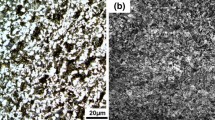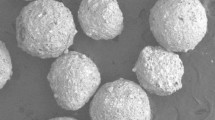Abstract
Sliding-corrosion phenomena play a crucial role in reducing the lifetime of tubings in the oil production industry. The aim of the present work is to develop and apply a close-to-reality test rig to describe the tribological performance of low-alloyed Carbon-steel (C-steel) under sliding-corrosion conditions in O2-free environment. The proposed test rig is highly relevant for the oil production industry and has been designed at the Austrian Competence Center for Tribology (AC²T). The benefit of this equipment is that it allows the setting of the CO2 atmosphere at a certain partial pressure while simultaneously varying the pH-value, Cl− ion concentration, and temperature of the electrolyte solution. Pure corrosion phenomena are investigated within a designed coupon box where conditions of steam, electrolyte injection, static, and dynamic flow are controlled. In addition to the corrosive environment, a tribological reciprocating sliding contact is implemented between tubing segments and coupling samples. Within this study, a commercially available low-alloyed C-steel was selected as base material for the tubing, which was tribologically stressed under reciprocating sliding contact against spray metal coated couplings. The results show a high influence of the steel microstructure on the performance of low-alloyed C-steel tubings under sliding-corrosion. Additionally, the dominant damage mechanisms that are observed in real field applications could be successfully reproduced by experimental simulation using this newly designed close-to-reality test rig.
Zusammenfassung
In der Ölfeldindustrie bewirken die Gleitkorrosionsmechanismen eine Verringerung der Lebensdauer der Steigrohre bei Bohrlöchern. Das Ziel dieser Arbeit ist es, das Tribokorrosionsverhalten von niederlegierten Kohlenstoffstählen (C-Stähle) in sauerstofffreier Umgebung mit dem Gleitkorrosionsprüfstand zu beschreiben. Der nachstehende Teststand hat eine sehr hohe Wichtigkeit für die Ölindustrie und wurde am Österreichischen Kompetenzzentrum für Tribologie (AC²T research GmbH) entwickelt. Der Vorteil dieses Teststandes ist es, einen Überdruck der CO2 Atmosphäre realisieren zu können und zusätzlich unterschiedliche Parameter wie pH-Werte, Cl Ionenkonzentration, usw. zu messen. Einflüsse auf die Korrosion wie zum Beispiel Flüssigkeitsbewegung, Dampfkorrosion, usw. können in einer Korrosionsteststandzelle kontrolliert eingestellt und bestimmt werden. In der Gleitkorrosionsteststandzelle werden zusätzlich zu den korrosiven Bedingungen ein Gleitkontakt zwischen Muffe und Steigrohr realisiert. Die Ergebnisse zeigen einen hohen Einfluss der Gefügestruktur auf das Verhalten und Lebensdauer der Steigrohre unter Gleitkorrosion. Die dominanten Schädigungsmechanismen im Ölfeld konnten mit dem entwickelten Gleitkorrosionsprüfstand gut nachgebildet werden und stellen dabei nicht nur einen wirtschaftlichen Vorteil für Unternehmenspartner dar, sondern bilden auch eine wichtige Wissensbasis für weitere Aktivitäten auf dem Gebiet der Gleitkorrosion.







Similar content being viewed by others
References
Zhu, S. D.; Wei, J. F.; Bai, Zhou, G. S.; Miao, J.; Cai, R.: Failure analysis of P110 tubing string in the ultra-deep oil well, Eng. Fail. Anal., 18 (2011), pp 950–962
Lin, N.; Xie, F.; Yang, H.; Tian, W.; Wang, H.; Tang, B.: Assessments on friction and wear behaviors of P110 steel and chromizing coating sliding against two counterparts under dry and wet conditions, Appl. Surf. Sci., 258 (2012)m pp 4960–4970
Vogl, T.; Mori, G.; Havlik, W.; Zehethofer, G.: Vermeidung von strömungsinduzierter CO2-Korrosion in der Erdgasproduktion mit Hilfe von Korrosionsinhibitoren, BHM Berg- und Hüttenmännische Monatshefte, 157 (2012), pp 323–331
API specification 11B, Specification for Sucker Rods, Polished Rods and Liners, Couplings, Sinker Bars, Polished Rod Clamps, Stuffing Boxes, and Pumping Tees; American Petroleum Institute, 2010
Trausmuth, A.; Rodriguez Ripoll, V.; Zehethofer, G.; Vogl, T.; Badisch, E: Impact of corrosion on sliding wear properties of low-alloyed carbon steel, Wear, 328–329 (2015), no. 4, pp 338–347
Trausmuth, A.; Badisch, E.; Weigel, F.; Zehethofer, G.; Vogl, T.: Sliding corrosive wear phenomena of different heat treated steels in oilfield applications, in Proc. MaTri´14, Wr. Neustadt, Austria, 2014
Acknowledgments
The present work was carried out at the “Excellence Centre of Tribology” Wiener Neustadt, Austria, in the frame of Austrian COMET Programme (Project K2, XTribology, no. 849109).
Author information
Authors and Affiliations
Corresponding author
Rights and permissions
About this article
Cite this article
Trausmuth, A., Ripoll, M.R., Zehethofer, G. et al. Close-to-Reality Sliding-Corrosion Test-Rig for Oilfield Application. Berg Huettenmaenn Monatsh 161, 27–32 (2016). https://doi.org/10.1007/s00501-015-0441-7
Received:
Accepted:
Published:
Issue Date:
DOI: https://doi.org/10.1007/s00501-015-0441-7




